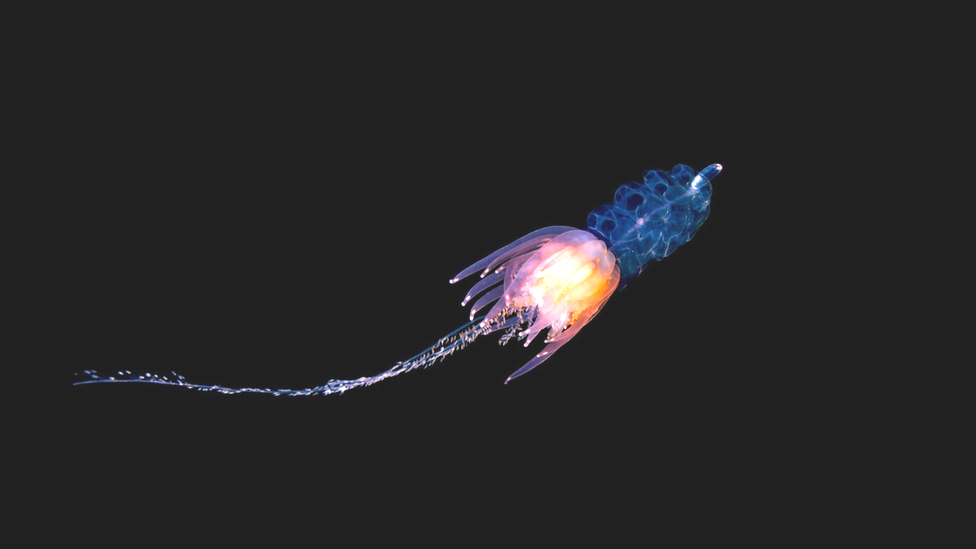Cornwall seaweed discovery could help tackle climate change
- Published
- comments
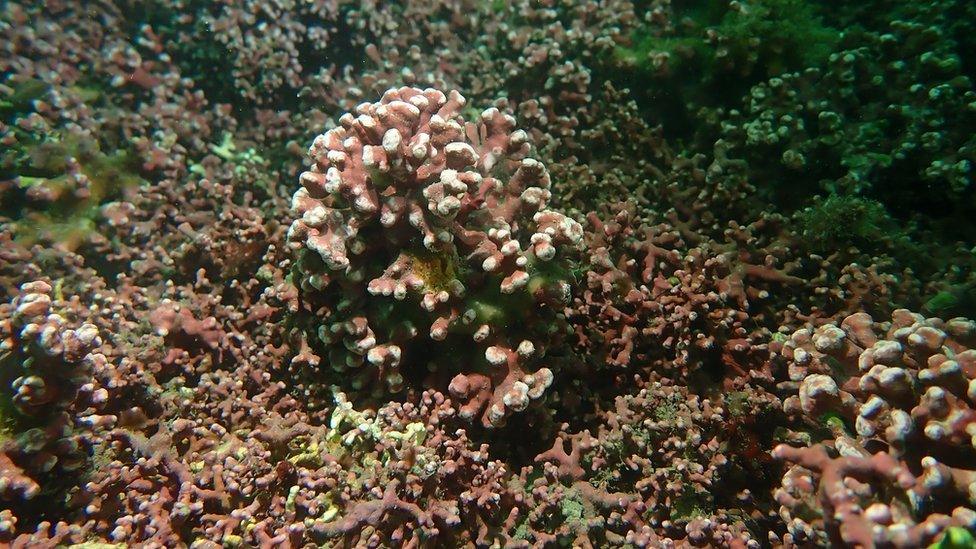
One of the largest amounts of a rare type of seaweed has been found in UK waters off the coast of Cornwall.
Scientists made the discovery in the Fal and Helford Estuary Special Area of Conservation.
They found a huge patch of maerl, an ancient seaweed, growing across an area of the sea floor the size of nearly 900 rugby pitches.
But the discovery isn't just good news for marine life, it is thought the seaweed could help fight the effects of climate change too.
Why is the ancient seaweed off Cornwall so important?
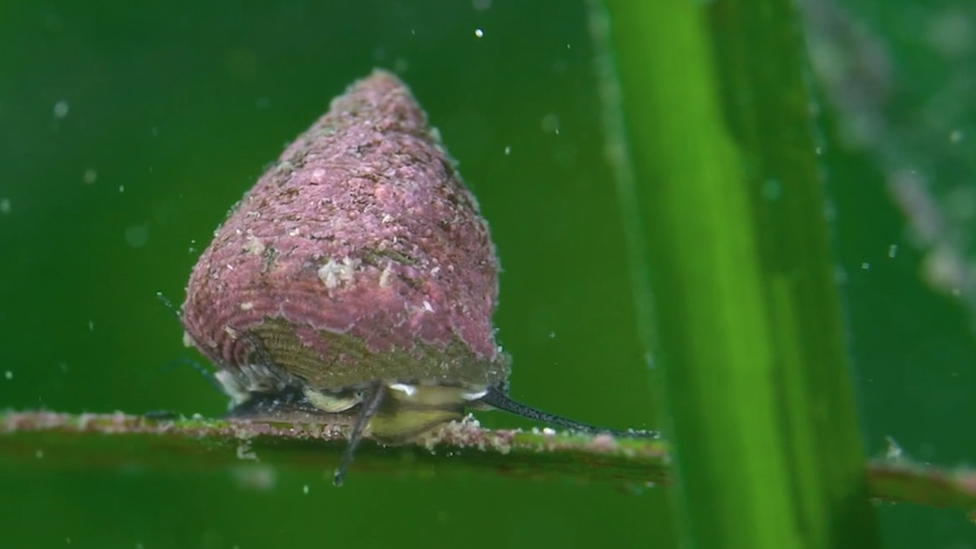
Maerl seaweed helps support and protect many forms of marine life
The living habitat on the seafloor is thought to be up to 4,000 years old and provides protection for many small marine plants and animals.
It is also very good at storing carbon at an estimated rate of 841 tonnes of CO2 each year.
That is the equivalent to nearly four million petrol car miles a year and five times greater than that absorbed by the combined area of seagrass, kelp and saltmarsh in the same area.
How was the seaweed off Cornwall found?
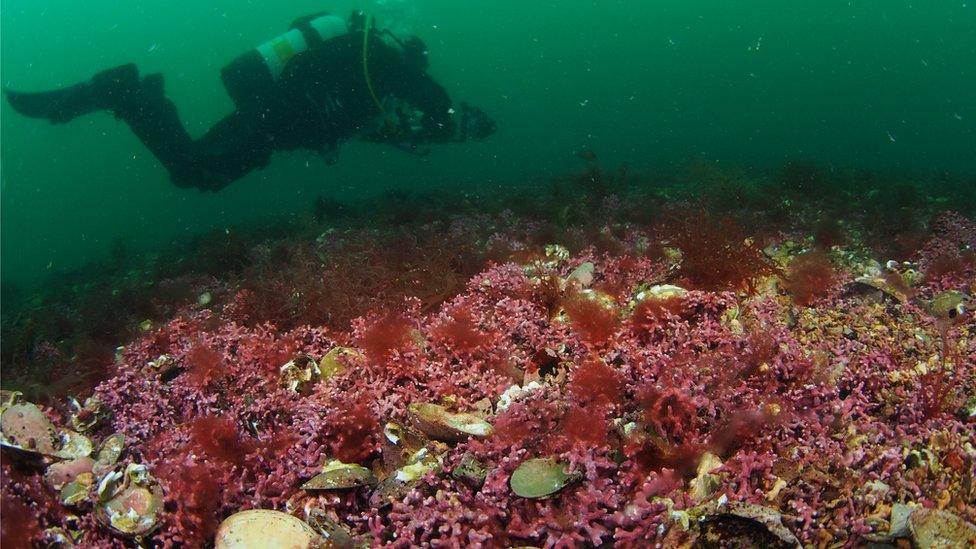
A diver swims over the maerl seaweed off Pendennis, Cornwall.
Environmental researchers made the discovery while looking into how well seagrass and seaweed can store what's known as blue carbon.
The council commissioned the University of Exeter and environmental researchers Natural Capital Solutions to study the areas as part of the Blue Natural Capital Project.
One of the project's aims is to see how marine habitats could be used to help combat climate change.
What is blue carbon?
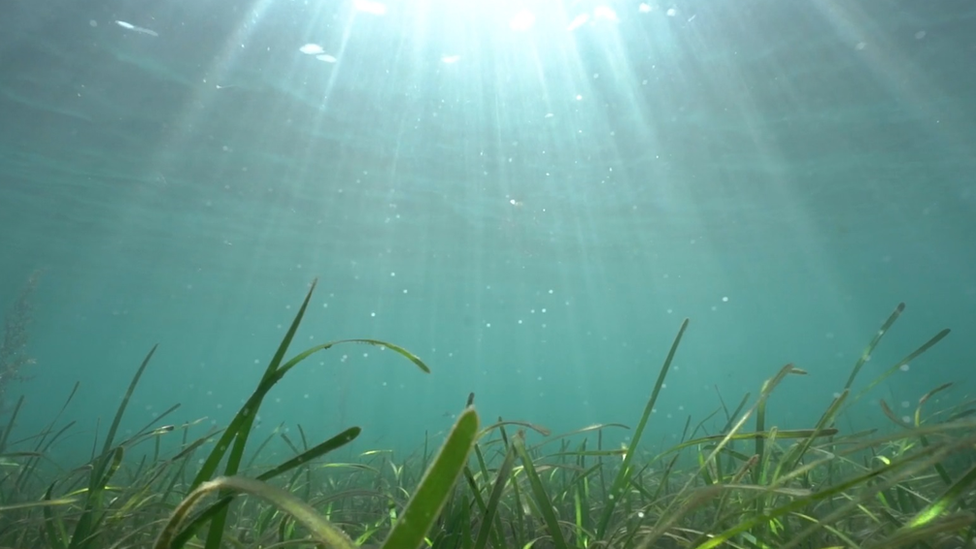
Scientists say blue carbon is a key defender against the warming of our planet
Blue carbon is the name given to carbon which is stored in coastal and marine ecosystems.
Seagrass, mangroves and saltmarsh which are found in these areas can transfer and store carbon.
Looking after these coastal areas is particularly important because they can store more carbon than forests on land.
What is carbon and carbon dioxide?
Carbon, when it is combined with oxygen, becomes carbon dioxide - a greenhouse gas. When released into the atmosphere this gas traps heat from the Sun and warms up the Earth.
Dr Chris Laing, Senior Lecturer in Marine Biology at the University of Exeter and research lead on the project said:
''Maerl has not been considered as a valuable carbon store to date, but our research demonstrates that as well as being a rare and valuable seabed habitat it should be a key player in coastal blue carbon assessments which is an extremely important discovery for Cornwall where the extent of the maerl beds are significant."
Work is now being carried out to protect the important ecosystem from threats such as damage caused by boats and temperature increases from climate change.
The project will also help to decide how blue carbon research will be looked at in the future.
- Published4 August 2023
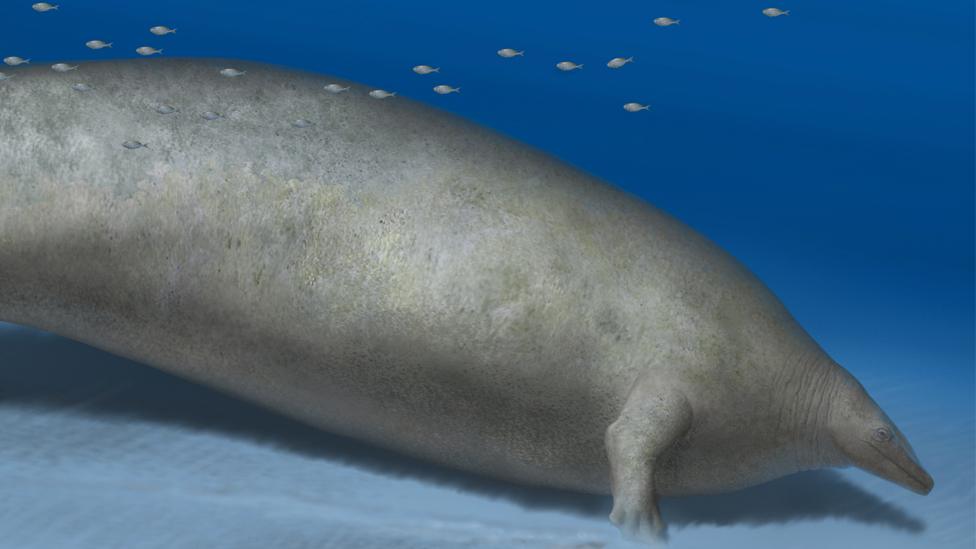
- Published13 June 2024

- Published6 May 2023
